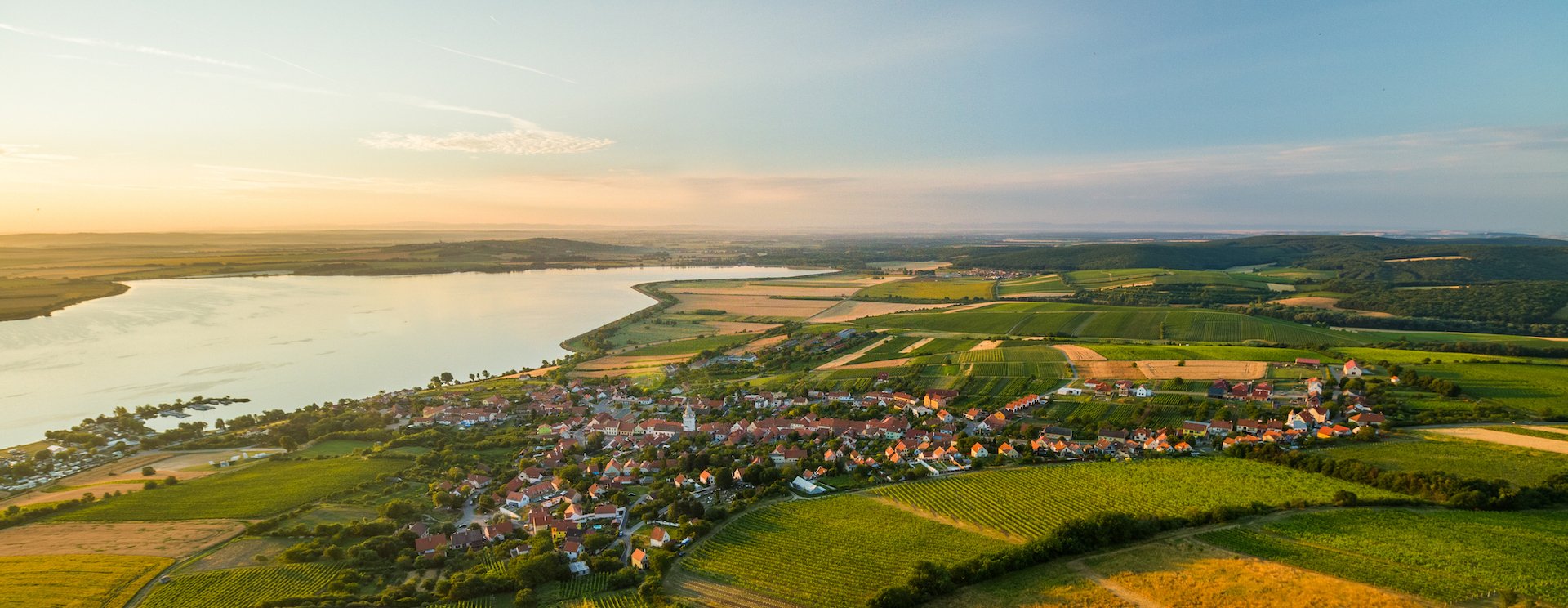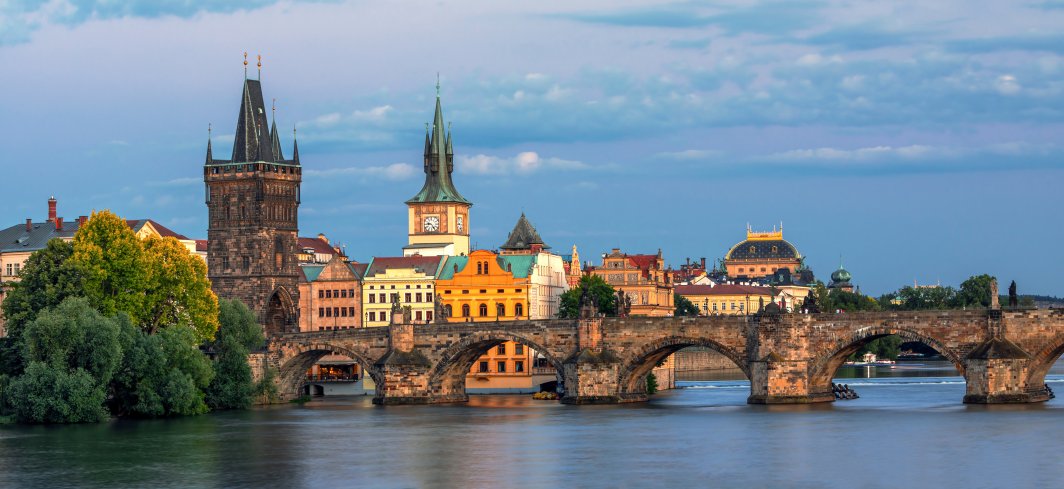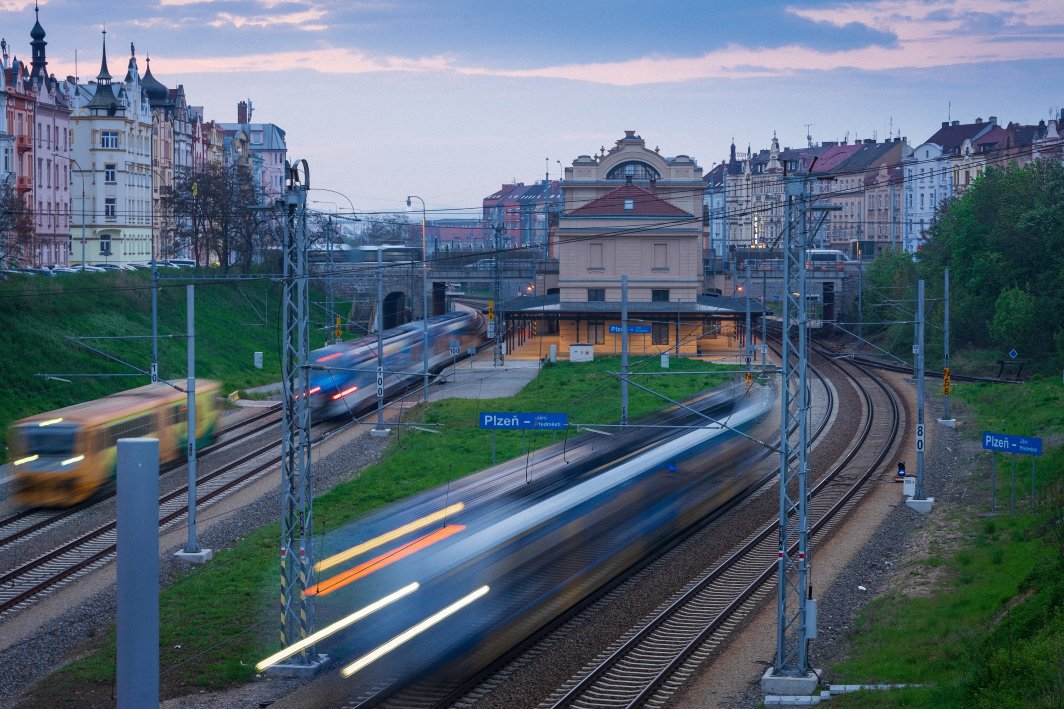
Regions of the Czech Republic

Region of the City of Prague
Name:
Region of the City of Prague
Region:
Region of the City of Prague
Total area:
496 km2 km²
Population:
1,384,732* (as at December 2023)
Working-age population:
909,437 (as at December 2023)
Unemployment rate:
2.10% (as at December 2023)
Institutions of higher education – type, number of students:
more than 120,000 students enrolled in eight public and at least twenty-two private universities, forty-nine public research institutions (67% of the country’s total)
Sectors in which the region excels:
artificial intelligence, gaming, space technologies, cultural and creative industries, financial services
Note: *preliminary data
More detailed information was not provided.

Central Bohemian Region
Name:
Central Bohemian Region
Region:
Central Bohemian Region
Total area:
10,928 km²
Population:
1,455,1940* (as at December 2024)
Working-age population:
927,230 (as at December 2024)
Unemployment rate:
3.36% (as at December 2024)
Institutions of higher education – type, number of students:
Charles University, Czech Academy of Sciences, Czech Technical University, Faculty of Biomedical Engineering in Kladno, Škoda Auto University (private university), research institutions, other universities and research institutions located in Prague.
Sectors in which the region excels:
engineering and automotive industry, aerospace industry, biotechnology, biomedicine, chemical industry, laser technologies, additive technologies, new materials, civil nuclear research, agriculture, and food production
Note: *preliminary data
Central Bohemia is the largest region in the Czech Republic and includes the nation’s capital, Prague. It has 1,144 municipalities across 26 districts and strong economic ties with Prague. The region is home to many historical sites, including two UNESCO heritage sites and protected landscape areas.
Major companies, such as Škoda Auto, Toyota, Valeo, AERO Vodochody AEROSPACE, Eaton, RIGAKU, Foxconn, LINET, Lego, Amazon, Philip Morris, and Procter & Gamble, have headquarters or operations in Central Bohemia. The region’s development is focused on becoming a leader in technologies and innovations, attracting businesses and fostering economic growth.
The region has attracted significant investments in science and research, and top research centers of transnational importance have been established here, such as ELI ERIC and HiLASE for high-power laser technologies, BIOCEV for medical research and drug discovery, and UCEEB for energy-efficient buildings. These institutions reinforce the region’s technological leadership.
In addition, the Central Bohemian Innovation Center (SIC) supports the implementation of innovations and the local business environment, from start-ups to expanding companies. SIC connects research centers and businesses to enhance the region’s innovation potential. Since 2015, it has helped over 500 companies innovate, expand, or secure investors while accelerating more than 140 research projects toward market application.
Additionally, SIC coordinates digitalization efforts within the European Digital Innovation Hub Brain4Industry, aiding businesses in adopting digital technologies and artificial intelligence to enhance efficiency and competitiveness.
The Central Bohemia Region promotes investment opportunities, particularly in high-value-added fields and services, ensuring continued economic development and technological leadership.
Petra Pecková
Governor of the Central Bohemian Region

South Bohemian Region
Name:
South Bohemian Region
Region:
South Bohemian Region
Total area:
10,057 km²
Population:
654,505* (as at December 2023)
Working-age population:
410,715 (as at December 2023)
Unemployment rate:
1,70% (as at December 2023)
Institutions of higher education – type, number of students:
approximately 16,000 students enrolled in four public universities (University of South Bohemia in České Budějovice, VŠTE, Faculty of Management of the University of Economics, Department of the Faculty of Mechanical Engineering of the University of West Bohemia in Plzeň) and three private universities (VŠERS, FAMO, CEVRO Institut Český Krumlov)
Sectors in which the region excels:
services, construction, tourism, industry, fisheries, agriculture, forestry
Note: *preliminary data
More detailed information was not provided.

Plzeň Region
Name:
Plzeň Region
Region:
Plzeň Region
Total area:
7,649 km²
Population:
613,109* (as at September 2024)
Working-age population:
393,322 (as at January 2025)
Unemployment rate:
3.3% (as at January 2025)
Institutions of higher education – type, number of students:
more than 14,000 students enrolled in three universities (University of West Bohemia in Pilsen, Charles University Faculty of Medicine in Pilsen, Faculty of Economics University of West Bohemia)
Sectors in which the region excels:
manufacture of electronic components and consumer electronics, machinery and equipment, electrical equipment, motor vehicles, railway locomotives, rolling stock and other transport equipment, aircraft and spacecraft and related machinery (aircraft interiors, aircraft seats, aircraft engine parts), medical and dental instruments and supplies (eyeglass lenses, plastic products for the medical industry)
Note: *preliminary data
The Pilsen Region is driven by research, development, and innovation, making it one of the most advanced and productive regions in the Czech Republic. Pilsen, and the entire region, were made famous in the past by globally successful brands, such as Pilsner Urquell and Škoda. Today, these traditional areas are carried on effectively by both the business and research sectors in the Pilsen Region, while new fields are also developing, often through start-up projects. The Pilsen Region builds on long-standing industrial experience and supports research, development, and innovation at the same time, shaping the future and making the region not only a great place for business and studying, but also for living.
There are more than 100 scientific, research, and development teams operating in the Pilsen Region, spread across various disciplines and topics. They can be found in companies, research centres, faculties, and science departments of the University of West Bohemia in Pilsen, as well as the Faculty of Medicine of Charles University in Pilsen. The connection with the private sector also earns the teams a lot of recognition internationally. We have excelled in the long term in the areas we concentrate in, which are five so-called specializations - Biomedicine & Technology in Healthcare, Smart Mobility, Intelligent Manufacturing Systems, Modern Energy Industry, and New Materials & Technologies.
The Pilsen Region wants to be a region of the future, and as such, has long supported activities in the field of innovations and their development, for example through the “Smart Accelerator for the Pilsen Region III” project.
Pilsen Region
The Pilsen Region is the third largest region in the Czech Republic, but one of the least populated. This is an undeniable advantage for those looking for a quiet place to live. With its national park, rivers, and other natural treasures, it attracts walking and hiking enthusiasts, while the many cultural and historical sites will be appreciated by history lovers. It also offers excellent public amenities, from primary to university education, high-quality medical care, and excellent transport services. Another advantage is its convenient location - in just one hour, its inhabitants can be at Prague International Airport, go skiing on the German peak, Großer Arber. The proximity of the border benefits entrepreneurs looking for new markets.
- 605,388 inhabitants, as of 1st January 2023
- 501 municipalities
- 30 % of the region’s population concentrated in Pilsen
- 79 persons per square kilometre
- Geographical co-ordinates 49°42′N / 13°12′E
- CZK 40,000 average gross wage
- 2.8% unemployment rate (as of 30th September 2023)
- 2.5 hour drive from Munich
- 1 hour drive from Václav Havel Airport - Prague
- 4.5 hour drive from Berlin
- 4 hour drive from Vienna
- Fast train connections to Nuremberg, Munich, Prague
- Šumava National Park, with an area of 680.64 km2
The Pilsen Region is historically an industrial region and its inhabitants are duly proud of it. Industry continues to develop, even with international overlapping, providing a significant amount of employment opportunities for workers at all levels. For a comfortable life, however, offers much more – high standard of living, cultural amenities, a vast array of of leisure activities for young and old alike, opportunities for personal development and a range of job offers for professionals.
Come and live with us!
Kamal Farhan
Governor of the Pilsen Region
www.plzensky-kraj.cz

Karlovy Vary Region
Name:
Karlovy Vary Region
Region:
Karlovy Vary Region
Total area:
3,314 km²
Population:
293,077* (as at December 2023)
Working-age population:
188,837 (as at December 2023)
Unemployment rate:
4.30% (as at December 2023
Institutions of higher education – type, number of students:
branches and dislocated workplaces of four public universities and regional workplaces of two private colleges, dozens to several hundred students (official numbers are not publicly accessible), the primary fields of study are economics, engineering, environmental studies, finance and management
Sectors in which the region excels:
mechanical engineering and custom metalworking, electrical engineering, automotive industry, traditional industries (glass, ceramics, porcelain, other non-metal mineral products), power industry and use of renewable energy sources, processing of secondary raw materials – advanced recycling technologies, production of rubber and plastic products, spa industry and tourism, beverage production, chemistry
Note: *preliminary data

Ústí region
Name:
Ústí region
Region:
Ústí region
Total area:
5,339 km²
Population:
808,255* (as at June 2024)
Working-age population:
518,141 (as at December 2023)
Unemployment rate:
5.42% (as at August 2024)
Institutions of higher education – type, number of students:
Jan Evangelista Purkyně University in Ústí nad Labem - the only public university having its registered office in the region, eight faculties, 8,500 students, three detached facilities of other public universities and two private universities in the region
Sectors in which the region excels:
energy, chemical industry. The Ustí Region is the first region with its own hydrogen strategy.
Note: *preliminary data
: The Usti Region is located in northwest Bohemia, sharing a border with Germany. Thanks to its location and good accessibility from Prague or Dresden (neighbouring Saxony), the region has significant potential for international economic and cultural cooperation. Usti Region is currently facing challenges related to the economic transformation brought about by the shift away from coal-fired energy sources.
The Usti Region is therefore focusing on new challenges in the field of clean energy sources, particularly development of the hydrogen economy. The region has its own hydrogen strategy focusing on the development of an integrated hydrogen chain from production, transport and storage to final consumption. An important institution is the relatively young Energy Center of the Usti Region (ECUK), which provides a wide variety of services and consultancy. There is also potential for the use of geothermal energy in the region, including research with an international dimension and subsequent application in practice. In the area of public research institutions, the region has strong research background in green and sustainable chemicals and nanotechnology, and it is developing the area of digitalisation through the collection, analysis and provision of open data and data analysis in line with Smart City/Region principles.
Jan Evangelista Purkyne University in Usti nad Labem is active in the region and its activities reflect the interests of the Usti Region, ranging from the development of quality education to research and the development of renewable and emission-free energy, including, for example, the creation of a network of scientific institutes cooperating on research in the field of renewable energy sources and the use of hydrogen in modern carbon-free energy. New study programmes, including a PhD programme, are being developed to train future professionals in innovative and transformational areas of the economy (clean energy, hydrogen).
The Usti Region is also attractive in terms of tourism (f.e. the well-known Bohemian Switzerland). Among the mining monuments in the Saxon and Bohemian Ore Mountains found on the UNESCO World Heritage List, the Usti Region contains the Krupka Mining Landscape and the Mednik Mining Landscape. Another UNESCO World Heritage site in the Usti Region is Zatec and the Zatec hop landscape, which is the first hop-growing area in the world to be awarded this status.
Richard Brabec
Governor
www.kr-ustecky.cz

Liberec region
Name:
Liberec region
Region:
Liberec region
Total area:
3,163 km²
Population:
449,079* (as at June 2024)
Working-age population:
281,448 (as at June 2024)
Unemployment rate:
4.76% (as at January 2025)
Institutions of higher education – type, number of students:
one public university - Technical University of Liberec (approximately 6,000 students - of which PhD students: 206)
Sectors in which the region excels:
nanotechnologies, advanced machinery, mechatronics, glass industry, optics, optoelectronics, automotive industry, electronics, ICT, advanced remediation, separation and membrane technologies, textile industry, plastics industry
Note: *preliminary data
Human potential, science, research, and innovation – these are the most important assets of the future worth investing in. Innovation is what propels the world forward; it is the engine driven by human ideas and the desire to improve what doesn't work or could work even better. The result is concrete projects and services for entities involved in education, science, research, development, and knowledge transfer into practice. The goal is to enable product development using local unique knowledge, traditions, experiences, and collaboration.
The Liberec region can build on its natural competitive advantages in the unique fields of glassmaking, engineering, textiles, electrical engineering, nanotechnology, and membrane technology.
As early as 2012, the Liberec region adopted a strategy with the main objective of supporting the development of research and development in the Liberec region (the so-called RIS3 strategy). A key tool for implementing this strategy has been the project called Smart Accelerator, with the Regional Development Agency as the executing entity, carrying out numerous activities.
It manages the portal Investuj pod Ještědem, which brings together property sale and rental offers in one place, focusing on so-called brownfields and greenfields, long-unused commercial properties, and other investment opportunities. In the field of new technologies, it is involved in digitalization through the DIH Northeast project. In cooperation with the Liberec Region, it plans to establish an educational center focused on cybersecurity, which will operate at the Secondary Industrial School in Česká Lípa.
The Liberec region is a region that has long and intensively supported nanotechnology, research, development, and innovation. This opens up the potential to move the region to new heights of technological progress. The Liberec region is creating conditions that allow researchers and innovators to realize their ideas and projects. It actively seeks ways to support the creation of new start-ups. It already has an excellent research base and top experts and aims to strengthen this area, allowing the region to play a significant role in global research and development. Betting on nanotechnology and innovation will bring not only economic growth but also contribute to improving the quality of life for the region's inhabitants.
The region also has its Liberec Business Incubator (Lipo.ink) supporting the creation and development of innovative companies in the Liberec region. It focuses on companies that come up with unconventional solutions to needs and problems, providing them with expertise on how to turn a good idea into a viable company.
Established as the penultimate of twelve innovation centers in the Czech Republic, Lipo.ink ensures that entrepreneurs and their ideas and investments remain in the Liberec region. By opening a new building in the center of Liberec in the fall of 2020, Lipo.ink also provided unique spaces for entrepreneurs.
Last year, it received the EU|BIC certification from the European Business and Innovation Centre Network (EBN). This step is a recognition of the comprehensive support provided to entrepreneurs in the Liberec Region. „We are proud of the success of Lipo.ink, which we founded in 2018 and which is one of the visible examples of successful support for innovation, development, startups, and companies. It proves that quality and innovation are not only significant in large organizations. Even small incubators, like Lipo.ink, play a key role in supporting new businesses and regional entrepreneurship,“ said Martin Půta, Governor of the Liberec Region
Martina Půta
Governor
www.kraj-lbc.cz

Hradec Králové region
Name:
Hradec Králové region
Region:
Hradec Králové region
Total area:
4,759 km²
Population:
556,949* (as at December 2023)
Working-age population:
345,988 (as at December 2023)
Unemployment rate:
3.20% (as at December 2023)
Institutions of higher education – type, number of students:
two public universities – University of Hradec Králové (6,242 students); Charles University Faculty of Medicine in Hradec Králové (1,799 students)
Sectors in which the region excels:
indsutry (engineering, automotive, textile, glass), agriculture, tourism
Note: *preliminary data
More detailed information was not provided.

Pardubice Region
Name:
Pardubice Region
Region:
Pardubice Region
Total area:
4,519 km²
Population:
530,560* (as at November 2024)
Working-age population:
302,419 (as at November 2024)
Unemployment rate:
2.2% (as at November 2024)
Institutions of higher education – type, number of students:
approximately 7,000 students at the University of Pardubice
Sectors in which the region excels:
electrical engineering, chemical industry, mechanical engineering, transport - Pardubice is a transport hub combining air, rail and water transportation
Note: *preliminary data
Located in the centre of the Czech Republic, the Pardubice Region will be ranked among important transport hubs in the near future due to the development of road, rail, air and water transport. It is an attractive region thanks not only to its high degree of safety, housing quality, health and life satisfaction, but also to its long industrial tradition. The decision two nearby cities – Pardubice and Hradec Králové – to join forces in the implementation of Integrated Territorial Investments in the Hradec-Pardubice agglomeration, thus further enhancing the area’s attractiveness, has proven to be the right step. The dominant role in the region’s economy is played by the manufacturing industry, which is driven by enterprises buttressed by their own research. The region is home to large companies that develop, produce and sell innovative final products and are competitive on the European and global scale, as well as innovation champions among small and medium-sized enterprises with a significant proportion of their own research at the international level, particularly in radio technology, chemistry and biomedicine. A positive aspect is that three-fourths of research funding comes from the private sector. Basic research is conducted at the University of Pardubice, which is developing successfully and where new space for collaboration is being opened. The P-PINK business incubator, whose operation is focused on active support for start-ups, was established in 2018.
The Pardubice Region offers a combination of beautiful countryside and magnificent history, arts, captivating music and all possible kinds of sports. The most important events undoubtedly include Smetana’s Litomyšl Festival, the Grand Pardubice Steeplechase and the Golden Helmet. The region is also associated with the taste of Pardubice gingerbread and the presence of horses, which are an essential part of the region. When visiting the Pardubice Region, you will be able to familiarise yourself with the local traditions including handicrafts, see numerous castles and chateaux, ancient military forts and fortifications, urban conservation areas and many attractive examples of Renaissance, Baroque, Art Nouveau and modern interwar architecture.
Martin Netolický
Governor
www.pardubickykraj.cz

Vysočina region
Name:
Vysočina region
Region:
Vysočina region
Total area:
6,796 km²
Population:
516,913* (as at June 2024)
Working-age population:
325,800 (as at December 2023)
Unemployment rate:
3.1% (as at November 2024)
Institutions of higher education – type, number of students:
the College of Polytechnics Jihlava (2,358 students)
Sectors in which the region excels:
automotive industry, metal-processing and mechanical engineering
Note: *preliminary data
The Vysočina Region is located in the centre of the Czech Republic, between Prague and Brno, and close to the Austrian border. It is easily accessible by road, rail, and is near two international airports, in Prague and Brno.
The region has a strong industrial base, including industries like automotive, metalworking, mechanical engineering, wood processing and furniture, as well as growing fields like industrial automation and IT. Many innovative companies in these sectors, as well as in electrical engineering and energy, are competitive in Europe and globally.
Over 98% of the region’s R&D funding comes from private companies. Several R&D centres and research institutes are located here, including the Institute of Theoretical and Applied Mechanics in Telč, the College of Polytechnics Jihlava, the Forestry and Game Management Research Institute in Pelhřimov, the Potato Research Institute in Havlíčkův Brod, the Institute of Vertebrate Biology in Studenec and the Nuclear Research Institute in Dukovany.
The region is preparing for the most significant investment in strategic energy infrastructure in the Czech Republic: the construction of a new nuclear power source at the Dukovany power plant. This investment, planned from 2028 to 2036, will contribute to meeting climate goals and strengthening energy self-sufficiency of the Czech Republic. Additionally, it will enhance the competitiveness and innovativeness of the local economy.
The Vysočina Region has a well-educated and flexible workforce. Tertiary education in the region is provided by the rapidly developing College of Polytechnics Jihlava which offers study programmes in the fields of electrical engineering and informatics, technical engineering and applied technology, economics and management, tourism, midwifery, healthcare and clinical social work.
Vysočina benefits greatly from international cooperation with partner regions such as Lower Austria, Grand Est (France), the Nitra Self-Governing Region (Slovakia), Transcarpathian Ukraine and the European Region Danube-Vltava. Further international cooperation is being established with Taiwan, Estonia and the Tampere region of Finland.
The region boasts a rich cultural and natural heritage, picturesque landscapes, and a pristine, safe environment. Combined with its skilled and adaptable workforce, these attributes make it an attractive destination for investment.
Vítězslav Schrek
Governor
www.kr-vysocina.cz

South Moravian Region
Name:
South Moravian Region
Region:
South Moravian Region
Total area:
7,188 km²
Population:
1,226,749* (as at December 2023)
Working-age population:
777,424 (as at December 2023)
Unemployment rate:
2.5% (as at December 2023)
Institutions of higher education – type, number of students:
approximately 61,500 students enrolled in five public, four private and one state university (2019)
Sectors in which the region excels:
information technology, life sciences, electron microscopy, the space industry, precision instruments, mechanical engineering, production digitalisation, cybersecurity
Note: *preliminary data
More detailed information was not provided.

Olomouc Region
Name:
Olomouc Region
Region:
Olomouc Region
Total area:
5,271 km²
Population:
631,688* (as at December 2024)
Working-age population:
395,991 (as at January 2023)
Unemployment rate:
3.8% (as at June 2024)
Institutions of higher education – type, number of students:
approximately 22,700 students enrolled in one public (Palacký University in Olomouc) and two private universities (Moravian Business College Olomouc, College of Logistics)
Sectors in which the region excels:
mechanical and electrical engineering, optics and fine mechanics, optoelectronics, industrial chemistry, advanced agricultural technologies for sustainable development and new materials and technologies, pumping and water technology, biomedicine, life science and health care, software development, spa and tourism
Note: *preliminary data
Dear entrepreneurs, dear business partners,
each of you knows that the most valuable thing you can have in your company is good people. You can replace machines and real estate, but you cannot replace people. People are the foundation of any business and I don't think that will change for a long time.
The Olomouc region is close to my heart, not only because I was born and live there, but also because of the people who live there. They are not made of sugar, they know that there is no cake without work and that if you want to have a good life, you have to work well. At the same time, our region has a rich industrial tradition, built on many successful engineering companies whose products are sold all over the world.
We are also a region with several universities, because education is as important for business as transport infrastructure - for example, the Olomouc Region is connected to the D1 motorway, and construction of the strategic D35 motorway will soon begin.
We are well aware that quality employees are the basis for good business, which is why the region generously supports the study and teaching areas that are most in demand on the labour market. This means that employers do not have to search for employees across half of the Czech Republic or from abroad, but can choose quality workers, engineers or craftsmen directly in our region.
And when all the work is done, we can relax in the most beautiful Czech mountains - the Jeseníky Mountains or go cycling along the flat Haná River. After all, rest is as much a part of life as work.
As you can see, the Olomouc Region is an ideal place not only for business, but also for living. And I have chosen only a small part of what we can offer for setting up a business. The best thing is to come and see for yourself. We look forward to welcoming you to the Olomouc Region.

Moravian-Silesian Region
Name:
Moravian-Silesian Region
Region:
Moravian-Silesian Region
Total area:
5,430 km²
Population:
1,189,204* (as at December 2023)
Working-age population:
757,202 (as at December 2023)
Unemployment rate:
3.90% (as at December 2023)
Institutions of higher education – type, number of students:
more than 26,000 students enrolled in three public (Silesian University in Opava, Technical University of Ostrava, University of Ostrava) and two private universities (The College of Entrepreneurship and Law, Prigo University)
Sectors in which the region excels:
IT industry, iron-ore processing, mechanical engineering, vehicle manufacturing, biomedicine technologies, chemical industry, smart - agriculture, new materials, hydrogen technologies, e-health, food industry
Note: *preliminary data
More detailed information was not provided.

Zlín Region
Name:
Zlín Region
Region:
Zlín Region
Total area:
3,963 km²
Population:
571,757* (as at February 2023)
Working-age population:
365,359 (as at December 2022)
Unemployment rate:
3,06% (as at February 2023)
Institutions of higher education – type, number of students:
one public university – Tomáš Baťa University in Zlín (approximately 9,600 students)
Sectors in which the region excels:
product and industrial design, plastics processing, rubber, machinery, aerospace, electrical engineering
Note: *preliminary data
The economy of the Zlin Region is distinguished by a strong basis comprising innovative companies, especially in the segment of small and medium-sized enterprises, a large number of which operate in industrial and significantly export-oriented sectors. The plastics industry holds a particularly strong position in the region due to the presence of Tomaš Baťa University in Zlin and its Centre for Polymer Systems, which is an important research partner of companies associated in the Plastics Cluster. The aerospace industry, which is represented in the region by manufacturers of aircraft and aircraft components and related technologies, also holds a significant position. These companies are associated in the Moravian Aerospace Cluster. Other strong sectors in the region include the mechanic-engineering, electrical-engineering and metalworking industries, as well as ICT, which is a developing part of the services sector. Furthermore, the Zlin Creative Cluster supports the region’s dynamically growing creative companies, whose success is based on the design of their products and technologies. The Technological Innovation Centre and its partners in the ZLINNOVATION platform offer a broad range of support services for entrepreneurs and investors in the Zlin Region. In 2024, the regional development agency ZRIA was established, playing a crucial role in the growth of the Zlín Region. Its focus includes supporting modern technologies, attracting investors, creating jobs with above-average salaries, and improving living conditions in the region. The agency's goal is to halt population decline, retain young talent, and contribute to the long-term development of the region as an attractive place for living, education, and business. An important part of ZRIA is the Holešov Industrial Zone, which is one of the largest development areas in the Czech Republic, with the entire necessary infrastructure for investors in the industrial, research and development, and business support services sectors. The Zlin Region also offers a number of popular tourist areas with natural, cultural and historical diversity, including monuments included on the UNESCO World Heritage List, spas and a variety of folk traditions. The local folk culture and the region’s distinctive gastronomy are unique in the Czech Republic.
olklore or gastronomy.
Radim Holiš
Governor
www.zlinskykraj.cz
www.krajbezhranic.cz

